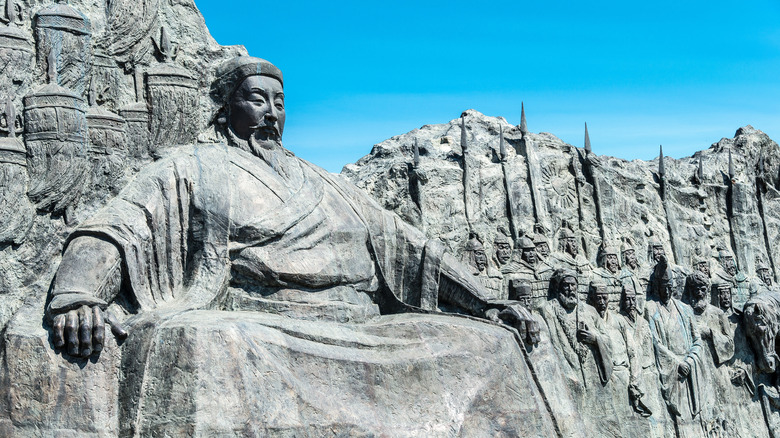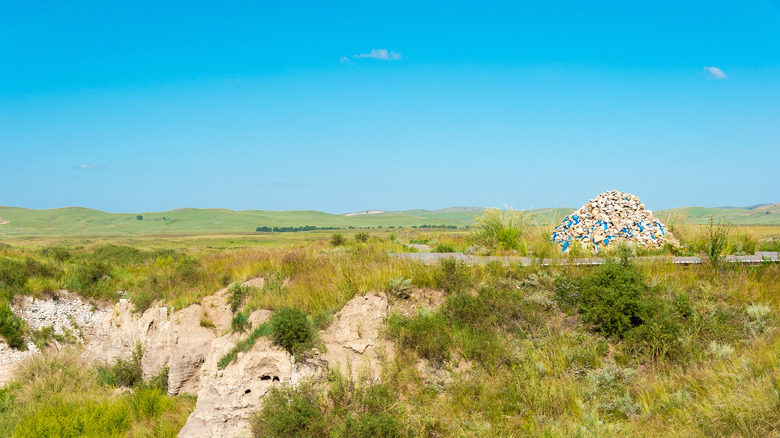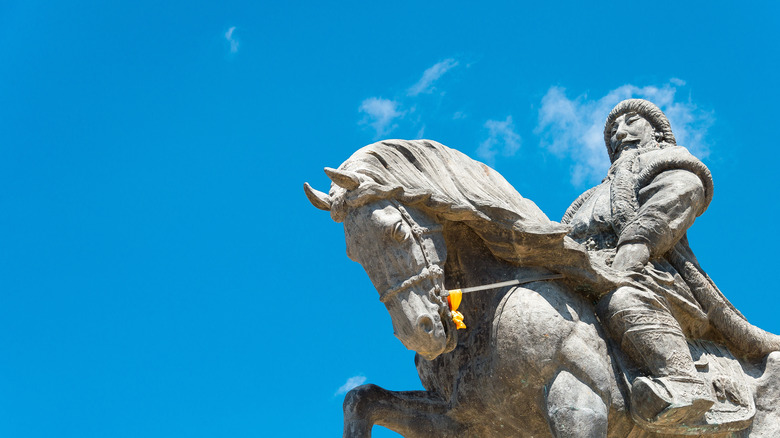The Truth About The Legendary City Of Xanadu
In the Western world, Xanadu conjures up all kinds of fantastical images, from the palatial mansion in the classic film "Citizen Kane," to the 1980 musical fantasy of the same name starring singer Olivia Newton-John, or maybe even a continent on Saturn's largest moon, Titan. Poetry lovers may think of "Kubla Khan" by Samuel Taylor Coleridge — though most of us only recall its opening lines: "In Xanadu did Kubla Khan/A stately pleasure dome decree."
Perhaps most common of all, though, is the idea of Xanadu as a mysterious Eden, a lavish, exotic city in the Far East (via Britannica), and that would actually be closer to the truth — or at least it may have been a version of the truth some 800 years ago.
The real Xanadu, the legendary capital of Mongol ruler Kublai Khan, and grandson of the incomparable conqueror Ghengis Khan, was located north of the Great Wall in Inner Mongolia in northeast China (via UNESCO). From the mid-to-late-13th century, during the rule of Khan, Xanadu was the capital of the Mongol Empire, then became the emperor's summer capital from 1274-1364 (via World History). The city, also known as Shangdu, was known for its "palaces, gardens, and waterways," World History reported.
Xanadu was built by Khan's Chinese adviser Liu Bingzhong in 1256, according to UNESCO. Bingzhong reportedly planned the city according to traditional Chinese feng shui, the ancient practice of creating balance with the natural world in a given space.
An Inner and Outer city
In this case, structures and roads within the classic Chinese square pattern were built with nearby mountains to the north and a river to the south in mind (via World History). In other words, there was not only an attempt to establish harmony within its walls but also a conscious effort to integrate the city into the larger landscape that surrounded it.
The city had 12-to-18-foot earthen outer walls with six towers and 10-to-16-foot inner walls made of brick, with four towers, that separated the Inner city from the Outer, where the majority of the population lived. Khan's elaborate raised palace was built in the "Inner City," where he and his entourage resided. The other distinct part of Xanadu was its enclosed hunting grounds, which included forests, meadows, and lakes. It was here, in the "Outer City" where Mongolian people set up their tents. One intriguing aspect of Xanadu's design was that it represented a turning point in Chinese history since it attempted to mesh two very different worlds — the traditional culture of the Han and that of the nomadic Mongol peoples (per UNESCO). Its location, where China's agricultural region met the steppe's grasslands, also represents that cultural blending.
At its height, Xanadu is believed to have boasted a population of around 200,000, per World History Encyclopedia, making it comparable in size to modern-day cities like Shreveport, Louisiana or Oxnard, California. And while it's hard to imagine a "universal ruler" being crowned in Shreveport, the city's location and importance played a critical role in countless historical events.
Only ruins remain
In Xanadu, Khan established the Yuan Dynasty, which ruled for more than a century and grew beyond the borders of modern China to encompass large swaths of Asia (via UNESCO). From Xanadu and the great debate that occurred over the Buddhist and Taoist religions in this legendary capital, Tibetan Buddhism spread throughout northeast Asia and is still a cultural and religious tradition practiced today (via World History). Venetian merchant and traveler Marco Polo visited the exotic city and, according to Britannica, became Khan's agent. Polo's popular book, "The Travels of Marco Polo," written in 1298, contained a description of Xanadu and made the capital city famous throughout the western world.
According to ChinaCulture, Marco Polo famously described "a city named Shangdu, which was built by the Khan who is now in power. There is at this place a very fine marble Palace, the rooms of which are all gilt and painted with figures of men and beasts and birds, and with a variety of trees and flowers, all executed with such exquisite art that you regard them with delight and astonishment."
Only ruins remain of this lost imperial Asian city. Xanadu is still shrouded in mystery in many ways, but UNESCO added it to its World Heritage List in 2012, forever cementing its place in world history. While much of what people would have seen 800 years ago is gone forever, some signs of the old city remain on the on 25,000 hectares of the UNESCO site, including the remains of temples and tombs, as well as the ruins of various waterworks and the Tiefan'gang Canal.


